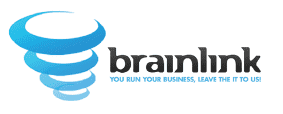
Hollywood has given the world a pretty unrealistic idea of what hackers are really like.
- They’re not operating in underground fortresses – they’re just working out of their basements.
- They’re not trying to take over the world – they’re just trying to take over your bank account.
- They don’t spend months targeting one key victim – they’re opportunistic, trying anything and everything that works.
The question is this: Are you prepared to deal with the real, commonplace hackers that are out there hitting businesses like yours every day? Do you even know what these threats look like, or what you’re doing to invite them into your business? Threats include:
- Ransomware: You heard about WannaCry, right? What about Peyta or Cryptowall? Ransomware is becoming more and more common every year, and it’s not going to stop anytime soon. That’s why a comprehensive backup solution (onsite and in the cloud) is the best defense.
- Weak Passwords: It sounds basic, but to this day, people continue to use weak passwords – yes, even at your firm. You can make it easier for them by implementing two-factor authentication (Duo, Google Authentication, etc.) and a password manager such as Lastpass Enterprise.
- Outdated Systems: Despite warnings from the industry experts and even the developers themselves, some firms continue to run Windows XP, Windows Server 2003, Windows Vista, outdated OSX, Timberline 13.x, etc. The plain truth is that an outdated system is, in most cases, indefensible.
- Outdated Security Practices: It occurs more often than you’d think – old hardware, shared and repeated passwords, or passwords that are essentially left out in the open or stored in Excel, Word or Outlook, etc.
- Lack of Security Reviews: Regular reviews are an expectation when it comes to your taxes, your prostate, and even the condition of your toothbrush – shouldn’t the same logic apply to your technology? Make sure you get your IT systems reviewed at least once every 18 months.
- Too Much Trust: Not too long ago, Target was hacked through their HVAC vendor – instances like this are why it’s so important to treat third-parties carefully. They should only be given the access that they need, even if that means refusing to give them the password to your Wi-Fi when they visit on site.
- Smart Devices: Despite being “smart”, this new line of technology often makes it easier for the user to be hacked, whether it’s a smart TV, conference room systems, lights system, or otherwise. It’s vitally important to make sure smart technology is quarantined to a separate network.
- Status Quo: This is often the biggest threat to any business, no matter the industry. Users fail to keep up with hackers because they’re comfortable relying on the way they’ve been doing things for the past three, or five, or ten years.
Allow Brainlink to help. Our uniquely process driven support — backed up by hard-won experience and certified technical expertise — will change your business for the better:
- Straight Talk: We tell it like it is; while other firms may paint you a rosier picture, we give you as clear an account as possible, based on as much data and evidence as is available so that you always have the whole truth, and can make the right decision on it.
- Accurate, Long-Term Budgeting: We don’t nickel and dime you for a dozen unforeseen service and support issues year after year – we help you develop a detailed, informed IT service and support budget up to two years in advance so that you can confidently devote just the right funds for your IT, and put the rest of the finances to better use.
- Healthy Skepticism: After more than two decades in the industry, we’ve learned not to take anything at face value, whether it’s what your vendor says, or even what your employees say. Instead of making sloppy, and even dangerous assumptions, we take our time to analyze available data and make decisions based on hard evidence and facts.
We can help you implement a range of key solutions to keep your business safe against the most common and prevalent hacking threats out there. We will do the following for you:
- Enable Two-Factor Authentication: Most organizations and services these days offer a secondary step for verification to ensure that hackers would need more than just your password to gain access to your accounts. While the methods may vary, a popular form of two-factor verification today is to have a confirmation code sent to your mobile device that you then use with your password to login. While it may take more time, it only adds to the security of your information.
- Use a Password Manager: Don’t try to manually manage the hundreds of passwords your organization uses. Password managers are cheap, will reduce your stress, and help with third-party vendors that aren’t as secure as they should be.
- Keep an Eye On Your Finances: Get your bank and wealth managers to provide daily updates via email and SMS so that you always know where you stand, and can act as soon as something odd happens.
- Upgrade Your IT: Keep in mind that if your IT is over 3-years-old, it’s definitely vulnerable to more modern hacking methods.
- Insure Your Business: Don’t forget that a lot of cyber insurance these days isn’t really worthwhile as it’s too new of an industry. Be picky, do your research, and find the right one.
- Educate Your Team: The more awareness the better, both in terms of limiting human error on your end, and in stopping your staff members from unwittingly helping a hacker get what they want.
Don’t let run-of-the-mill hackers put your business at risk. Partner with Brainlink today to get the protection you need. For more information, get in touch right away at {phone} or {email}.
